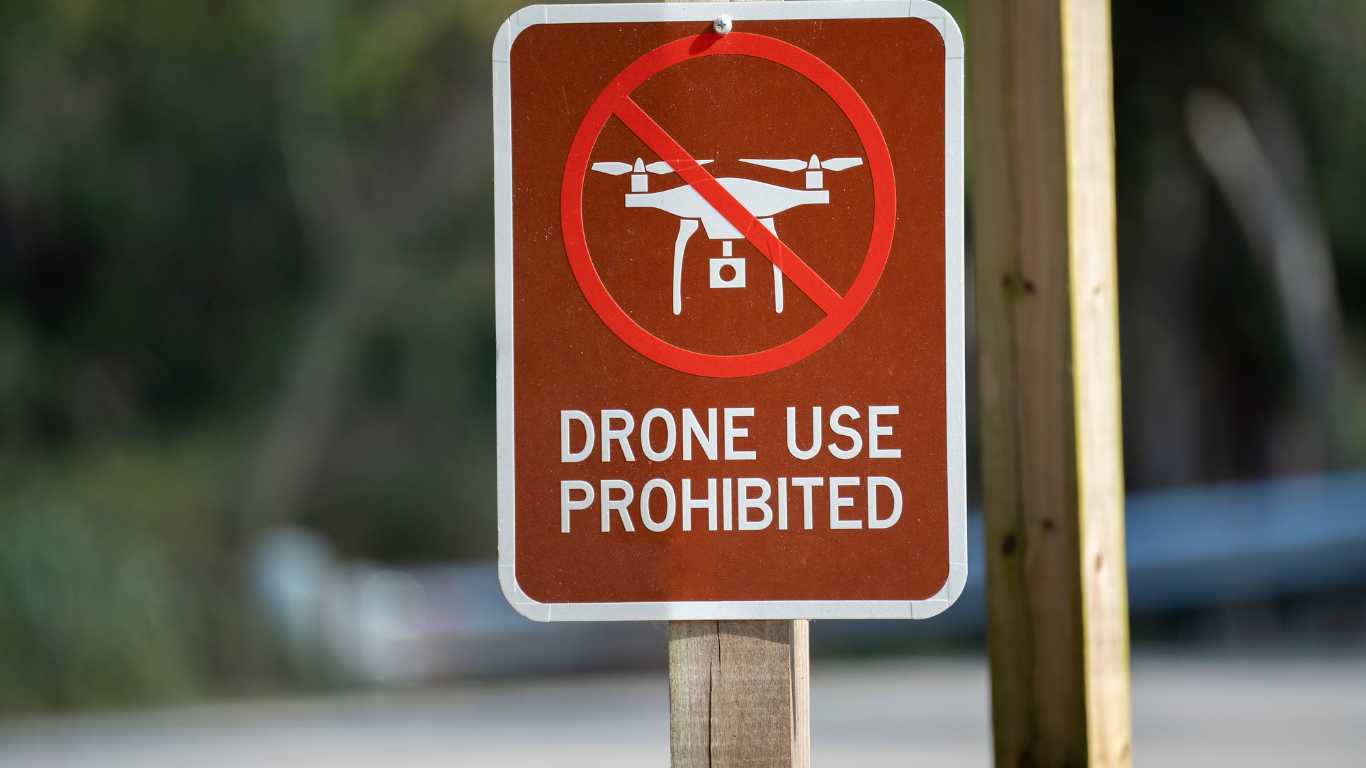Unmanned aerial vehicles, commonly known as drones, have rapidly become a revolutionary technology with applications ranging from aerial photography to delivery services. However, not all airspace is open to these flying marvels. Drone enthusiasts and operators must be aware of the locations where drones are banned to ensure they operate within legal boundaries and prioritize safety and security.
Drones have captured the imagination of enthusiasts worldwide, and their popularity continues to surge. However, this surge in usage has led to a pressing need for comprehensive regulations to ensure safety, privacy, and security are upheld.
Understanding Drone Regulations
1. The Need for Regulation
With drones becoming more accessible and affordable, a robust regulatory framework has become crucial. The potential for drones to interfere with manned aircraft, invade privacy, or compromise security necessitates guidelines that strike a balance between innovation and safety.
2. Different Types of Airspace
To understand where drones are prohibited, it’s important to comprehend the various types of airspace. Class A to G airspace, designated for different purposes, impact where drones can legally operate.
3. No-Fly Zones Explained
No-fly zones are areas where drone flights are prohibited due to their proximity to sensitive locations or potential risks. These zones safeguard critical infrastructure, people, and the environment.
Where Drones are Typically Banned
1. Near Airports and Heliports
Drones and aircraft sharing the same airspace can lead to disastrous consequences. Drones are typically prohibited within a certain radius of airports and heliports to prevent collisions.
2. Military Installations
National security concerns mean that drones are forbidden near military bases and installations. The potential for drones to be used for espionage or disruption necessitates strict regulation in these areas.
3. National Parks and Wildlife Reserves
Preserving natural habitats and minimizing disturbance to wildlife are priorities in national parks and reserves. Drones can disrupt ecosystems, leading to their prohibition in such areas.
4. Government Buildings and Critical Infrastructure
Drones are often banned near government buildings, power plants, and other critical infrastructure to mitigate attacks or security breaches.
Navigating Urban Restrictions
1. Privacy Concerns and Residential Areas
Operating drones near residential areas can infringe upon privacy rights. Regulations aim to prevent invasive activities that could lead to privacy violations.
2. Sporting Events and Crowded Spaces
Crowded venues like stadiums and sports events pose risks if drones malfunction or fall. Prohibiting drone flights in these areas ensures public safety.
3. Schools and Educational Institutions
Drones near schools can cause disruptions and safety concerns. Restricting flights in these areas maintains a secure learning environment.
Stay tuned for the rest of the article, where we’ll delve into international no-fly zones, staying updated with regulations, safety concerns, the future of drone regulations, and more. If you want to learn more about responsible drone operations and where drones are banned, continue reading.
Countries where drones are banned
As of my last knowledge update in September 2021, regulations regarding drone usage can change frequently, so it’s important to verify the current status with official sources before operating a drone in any country. However, I can provide you with a list of countries that had either banned or heavily regulated drone usage up until 2021. Keep in mind that these regulations might have changed since then:
- North Korea: Drone usage is completely banned due to national security concerns.
- Saudi Arabia: Strict regulations are in place for drone usage, and permits are required for both recreational and commercial purposes.
- Iran: Drone usage is heavily regulated due to national security concerns, and permits are required for any drone-related activities.
- Iraq: Drone usage is heavily regulated, and permits are required for both recreational and commercial drone operations.
- Syria: Due to ongoing conflicts and security concerns, drone usage is largely banned.
- Yemen: Similar to other conflict-prone areas, drone usage is restricted due to security reasons.
- Somalia: Drone usage is banned or heavily regulated in many areas due to security concerns.
- Libya: Due to political instability and security concerns, drone usage is restricted.
- Cuba: Drone usage is heavily regulated, and permits are required for any drone-related activities.
- Algeria: Strict regulations are in place for drone usage, and permits are required for both recreational and commercial purposes.
- Morocco: Drone usage is regulated, and permits are required for certain categories of drone operations.
- Egypt: Drone usage is restricted and permits are required for various types of drone activities.
FAQs:
Are there any exceptions to drone bans in restricted areas?
Some exceptions exist for authorized personnel, such as government agencies or research institutions, but they must adhere to strict regulations.
How can I check if a specific location is a no-fly zone?
Various mobile apps and online resources provide real-time maps indicating no-fly zones. It’s crucial to check before every flight.
Can drones fly near beaches and coastal areas?
Regulations can vary, but many coastal areas are popular and may have restrictions to protect beachgoer’s safety and privacy.
What penalties can I face for flying a drone in a restricted zone?
Penalties can include fines, confiscation of equipment, and even legal action if the violation is severe. It’s important to comply with regulations.
Will drone regulations become more or less strict in the future?
The future of drone regulations will likely involve a balance between safety and technological advancements, with some areas becoming stricter while others adapting to new possibilities.
